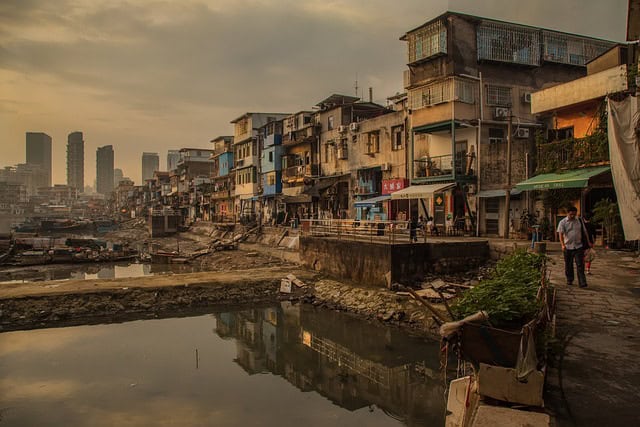Author: Manu Steens
In this piece, I give my own opinion, not that of any organization.
Affluent people
In organizations in the “rich west,” “affluent people” at work mostly have formal leaders. Note that it is not my intention to abolish formal leadership in favor of informal leadership.
These ‘affluent people’ are employees, dependent on luxury products and cannot simply ask for the help of an equal in rank in another department or business unit. This because the questions have to go up via the hierarchical lines, and then descend again to the person with the necessary knowledge and skills. This approach depends on the goodwill of the hierarchical leaders and is very time consuming. By the time the problem can be addressed, it has already evolved and the proposed solution may no longer be valid.
Slums
In the slums of major South African or Latin American cities, there are no formal leaders. Everyone knows everyone, and everyone naturally respects those who know and can do things. Informal leadership prevails here. In this way, it is somewhat related to horizontal, self-steering organizations.
The social structure comes from an original start. Friendships go through generations: parents are friends with each other, children with each other, grandchildren with each other. And more: the grandparents know each other’s grandchildren, and are also friends with them. And give more education: ‘It takes a village to raise a kid’.
This social structure is very flexible, in the sense that on the one hand it is highly trained in solving their daily necessary problems, without being dependent on luxury tools such as smartphones and expensive computers, even on electricity and sometimes running water. The questions are at a basic level of survival: “If I have food, clothes, drinking water, will I be healthy tonight?”. In addition, because they have a strong natural informal social structure, they can always come to each other with a question. And no one abandons the other. And no one feels abandoned. They succeed in solving their problems: they survive. Altruism for each other is a necessity. Not a buzzword.
Their resilience therefore comes from daily crisis exercise and socially safe behavior. ‘Direct communication’ is a key practice.
What does this mean?
The question then is what we might be able to achieve, with all our luxury solutions, if we were to engage in the same socially safe behaviour towards each other. If the organizations were to conduct crisis exercises on a more regular basis, in which ‘ordinary’ employees could also participate. Would any of the citizens of the ‘rich, affluent’ West (easily) survive in a slum, where it is not possible to pay with a credit card, where it is not easy to find electricity for the smartphone, where everyone is equal, and where you only achieve things by helping each other socially?
This does not mean, as I wrote, that the formal hierarchy should be abolished. However, there are things that should be possible that are unusual for some organizations:
- Not being on an island: knowing each other’s needs and strengths
- Being able to communicate directly with someone from another business unit, who you think may have a solution.
- Cultivating risk leadership in the organization with empowerment.
Conclusion:
To this end, the following are needed:
- We know us: know each other, know each other’s strengths and weaknesses.
- Interpersonal safety: taking a step towards ‘the other’ with your question is normal.
- Empowerment: cultivating the best possible growth mindsets.
- Transparency: teaching each other the information and skills that are needed.
- Willingness to help: ‘My colleague is important to me, so I think along with him and I help where I can’.

